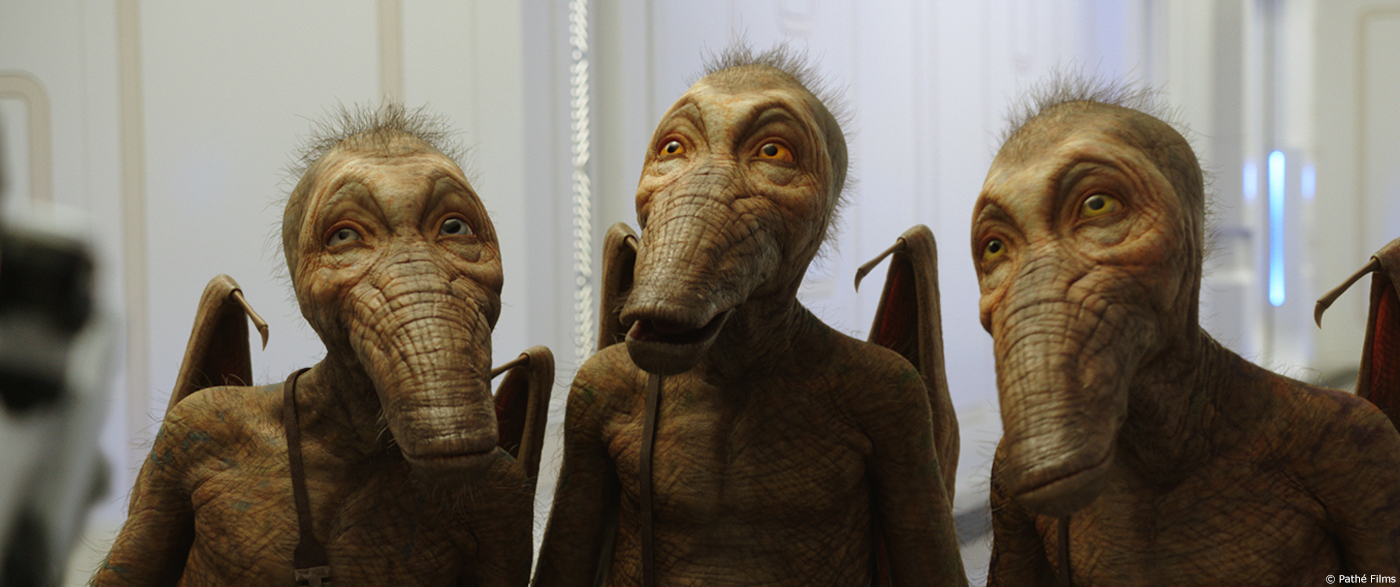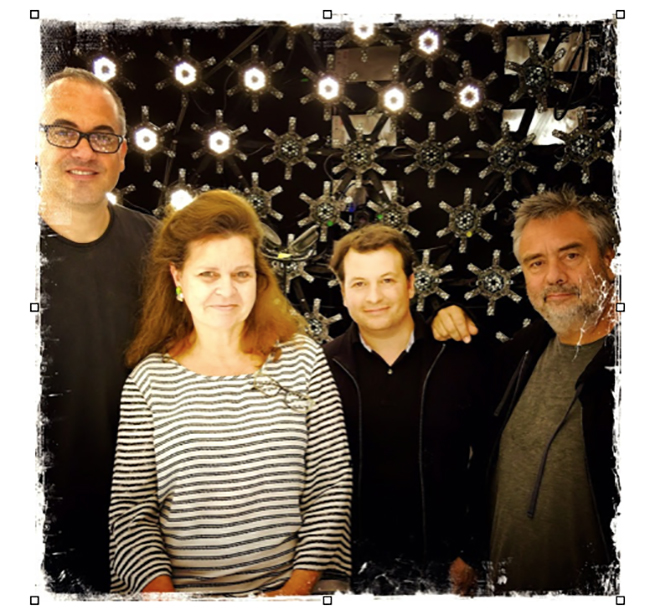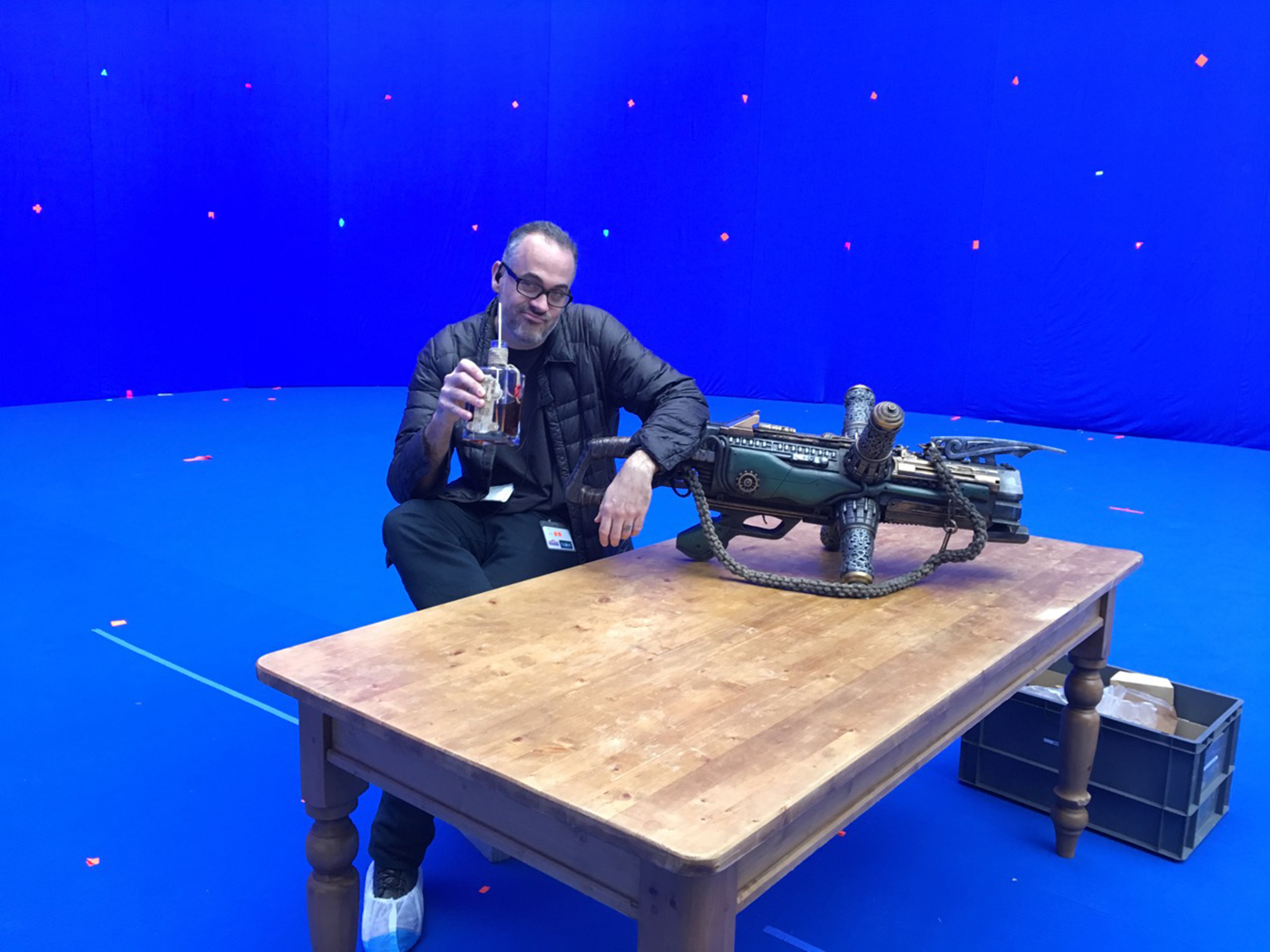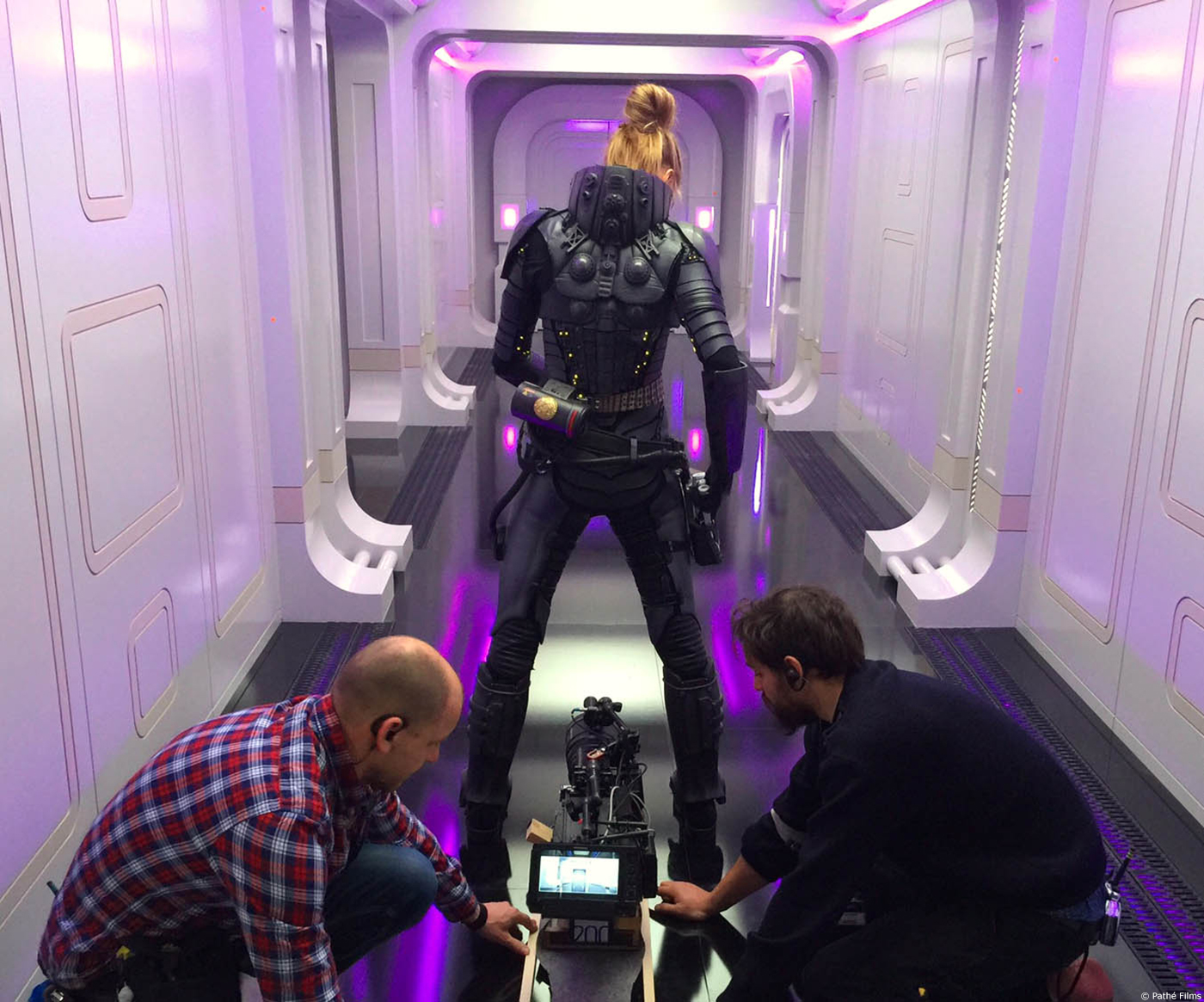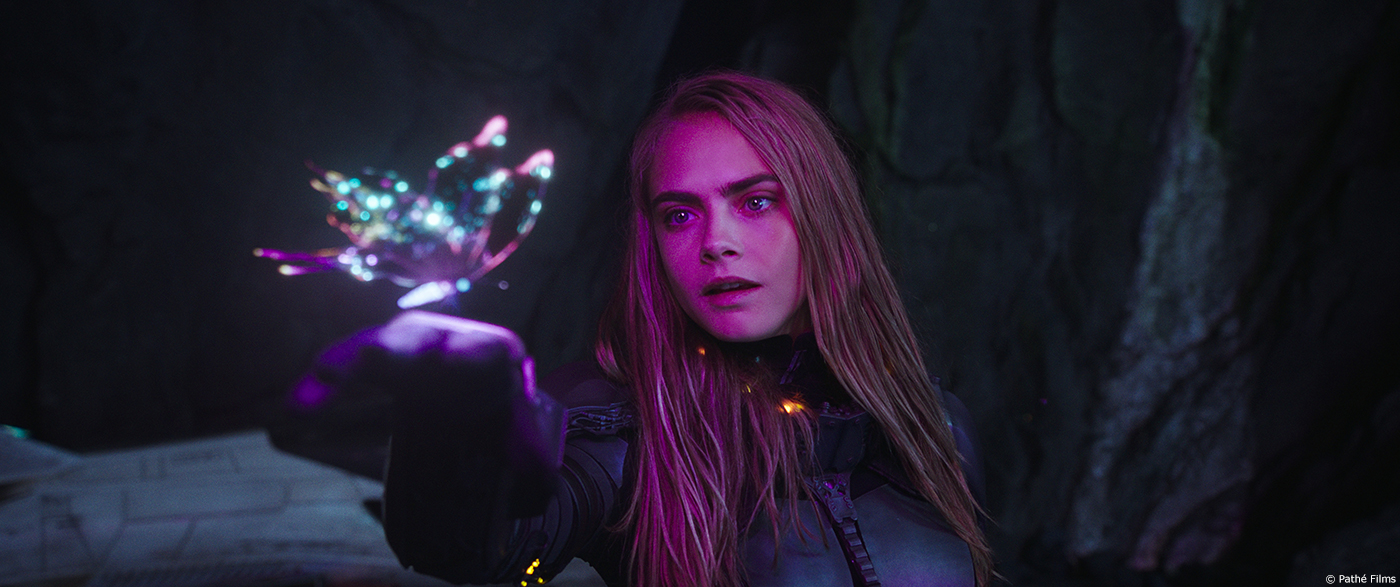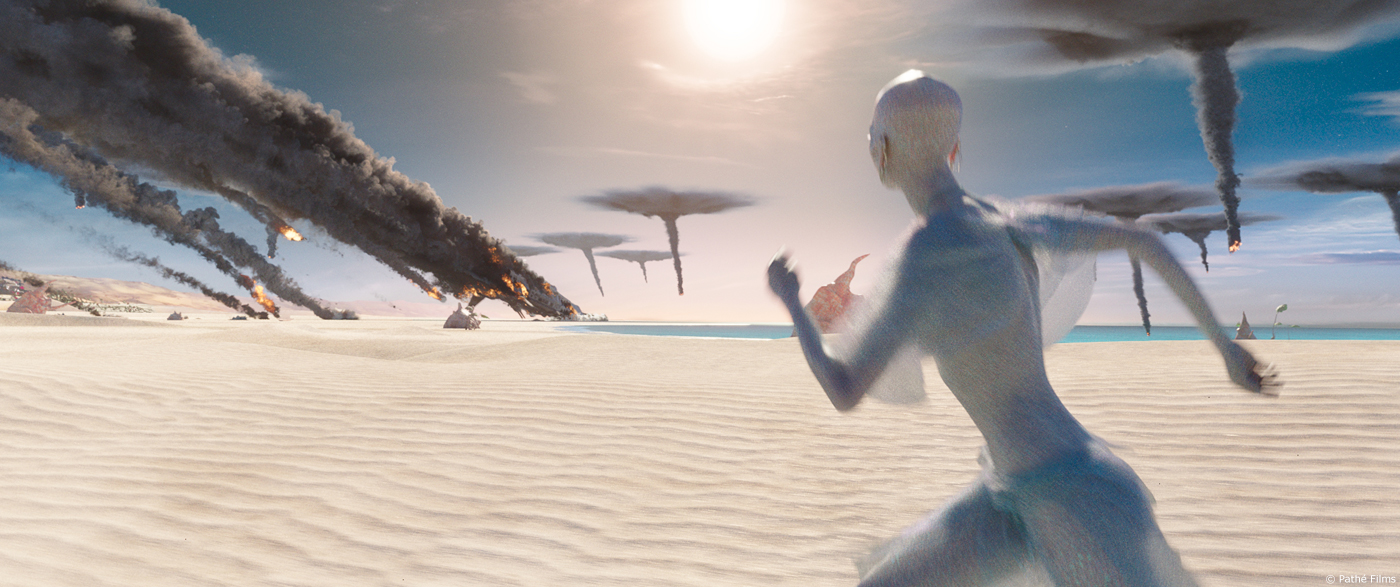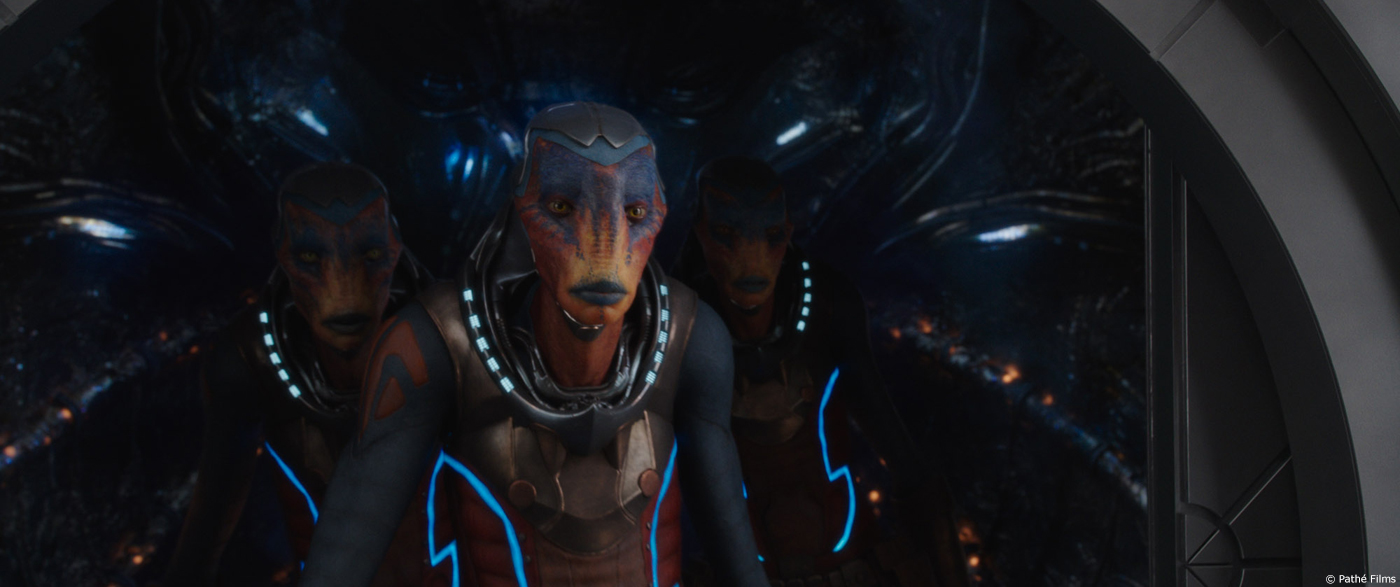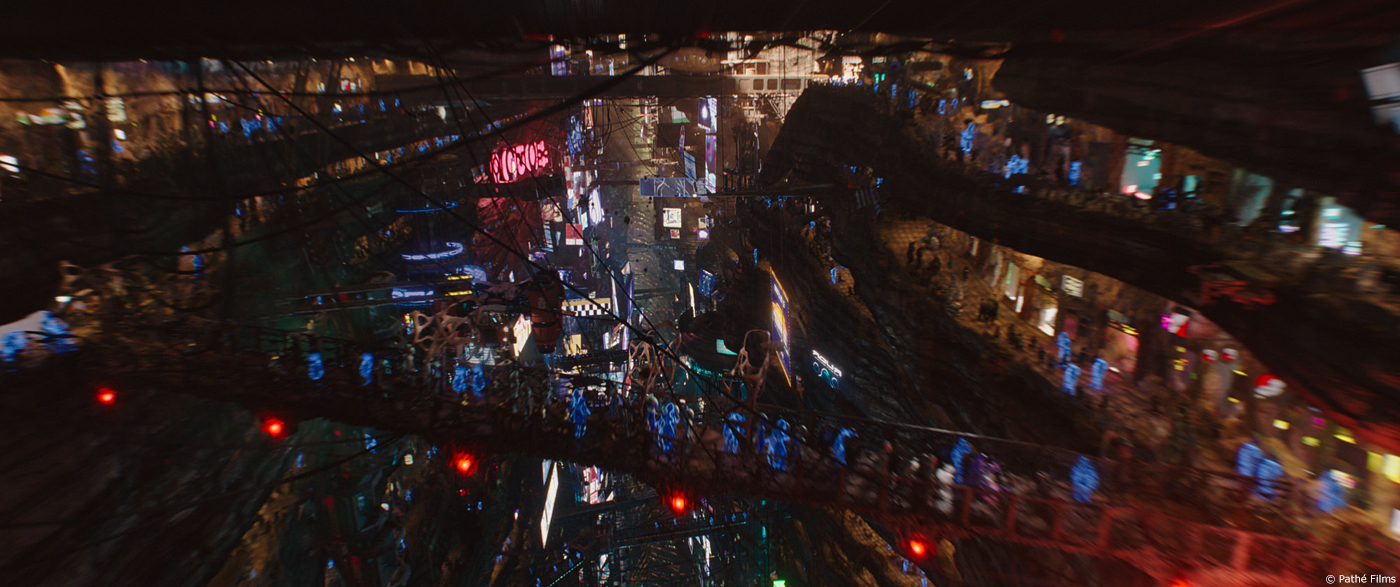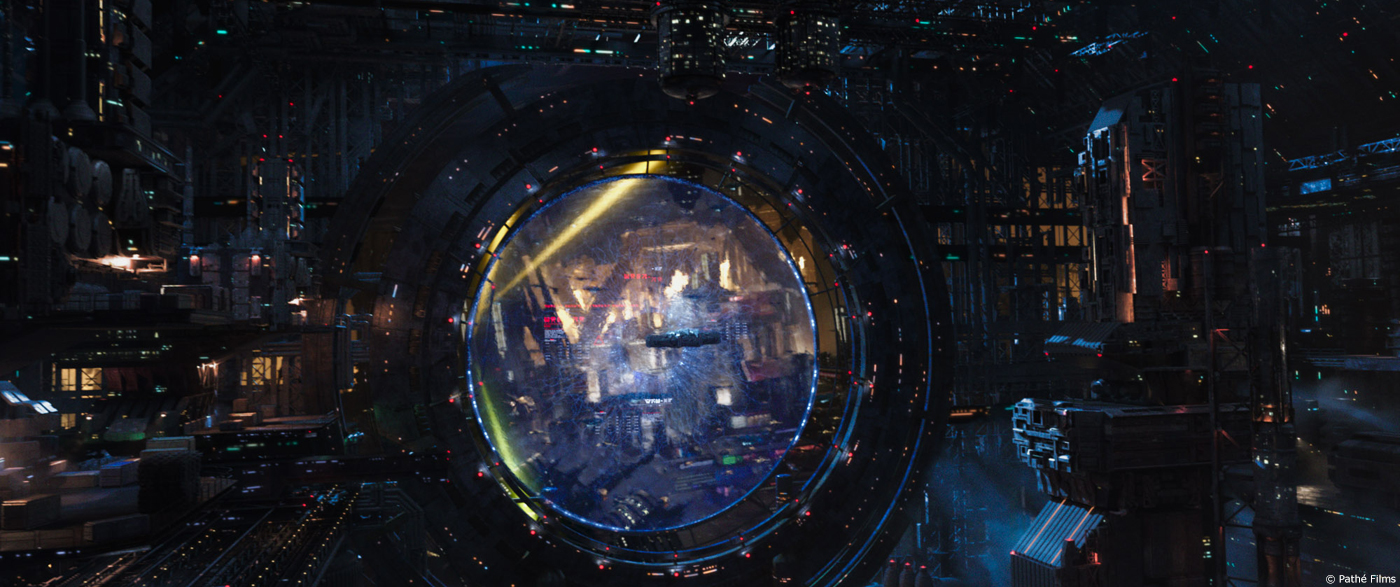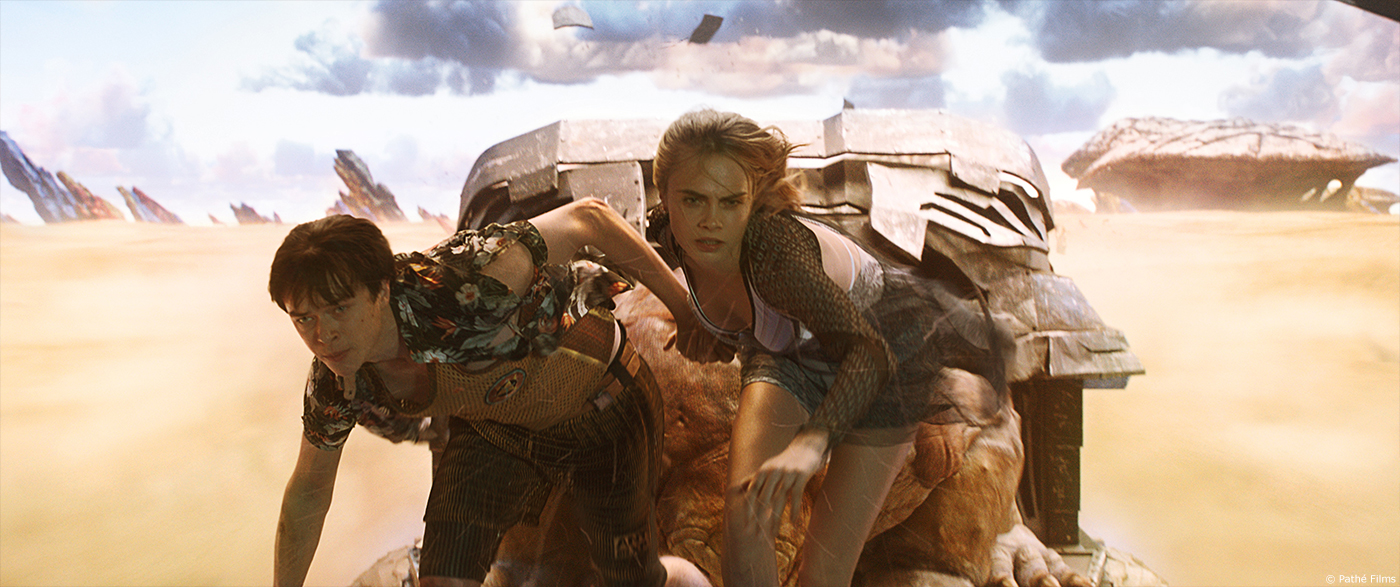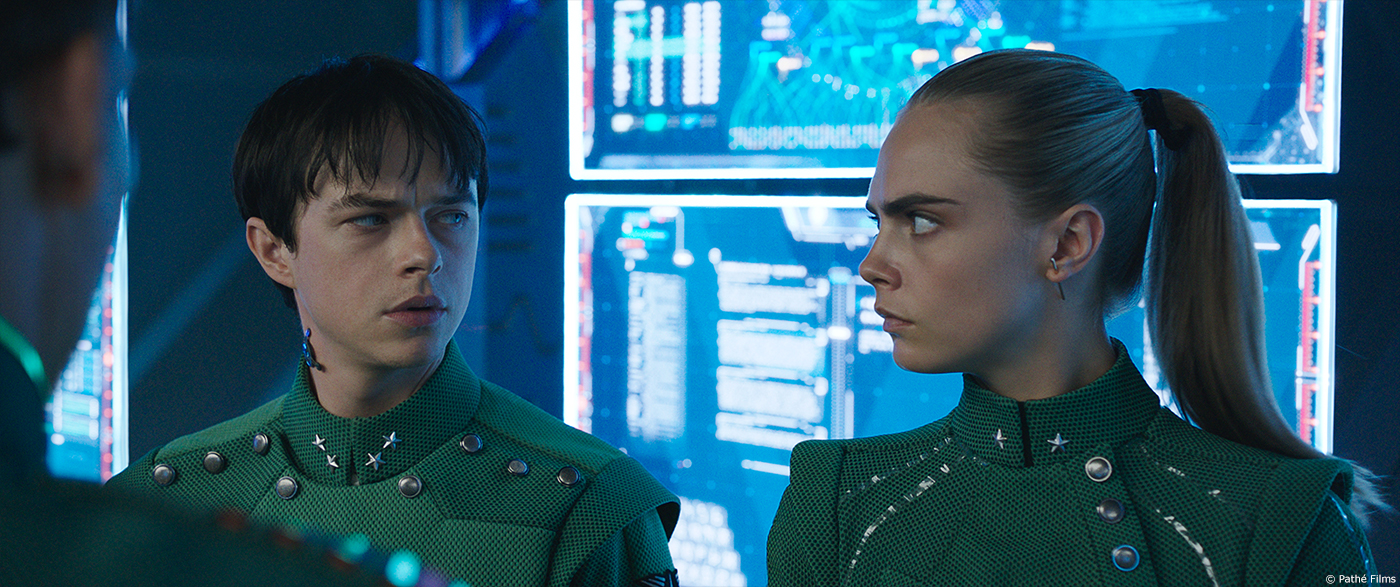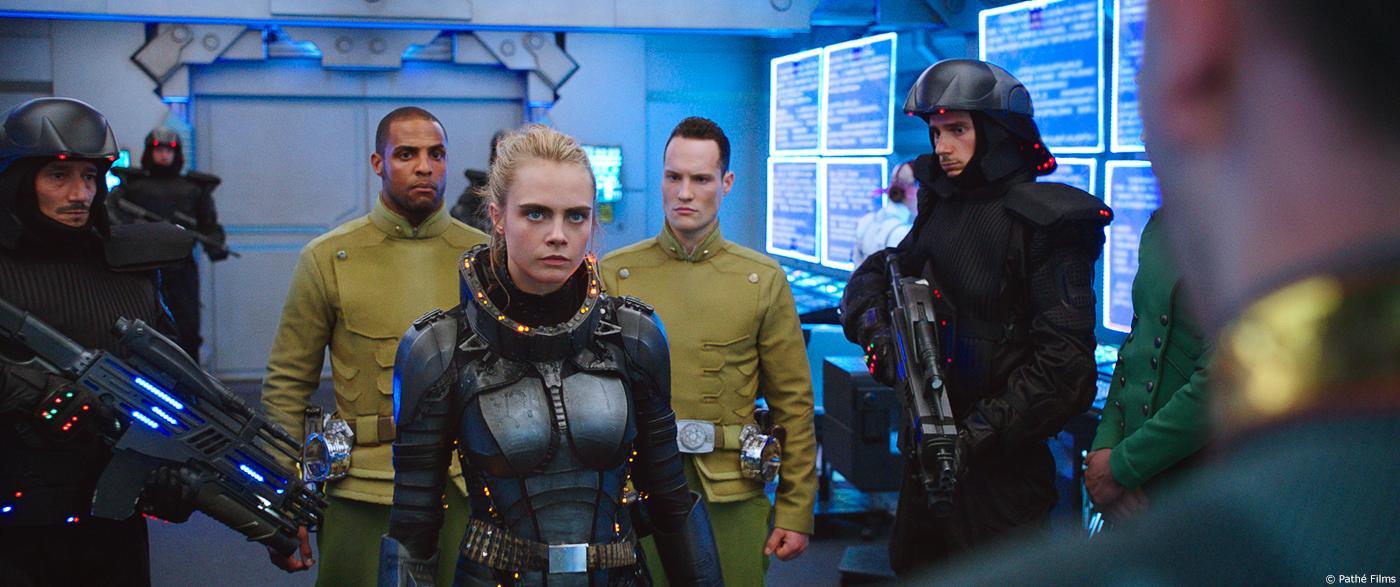In 2013, Scott Stokdyk told us about the work of Sony Pictures Imageworks on OZ THE GREAT AND POWERFUL. He then took care of the visual effects of THE 5TH WAVE.
Sophie Leclerc started her career in the visual effects at Tippett Studio. She has produced the visual effects of many films such as THE A-TEAM, FAST FIVE and UPSIDE DOWN. VALERIAN is her second collaboration with Luc Besson after LUCY.
What is your background?
Sophie Leclerc // I move from Paris to San Francisco to study filmmaking at San Francisco State University. I was a documentary filmmaker in the late 80s and early 90s and my first job in Visual Effects was at Tippett Studio. I quickly became a freelance VFX Producer and have been doing this for the past 17 years with my base in Los Angeles.
How did you get involved on this show?
Sophie Leclerc // I worked on LUCY with Luc Besson and his wife Virginie, our Producer. We really liked working together and they asked me if I would be interested in working on VALERIAN. I immediately said yes.
What was your feeling to help bring to life such an iconic character as Valerian?
Sophie Leclerc // Excitement! The graphic novel from Christin and Mezieres has a lot of incredible characters and I knew that it was Luc’s long time dream to bring it to the cinema. Fantastic and exceptional project for visual effects.
How was the collaboration with director Luc Besson?
Sophie Leclerc // I love working with Luc. He had thought of this film for a long time, wrote it, and knew what he wanted. He is very opened to suggestions and trusts the people he works with. I feel very lucky to have contributed to Luc’s vision and to have worked with so many talented artists from all over the world.
What was his approach and expectations about the visual effects?
Scott Stokdyk // After seeing AVATAR, Luc realized that the only VFX limitations now were his imagination, especially if he gave the best VFX companies the proper time and budget to do their work. Luc saw VALERIAN as an opportunity to realize some of the images he had been thinking about since THE FIFTH ELEMENT.
The best thing for the VFX in VALERIAN was that Luc had a very good picture of what he wanted in his head already, so there was not a lot of searching for answers… in fact, even when we were shooting bluescreen, Luc did not need any real-time bluescreen background replacement, because he was picturing the virtual composition in his head, while focusing on the actors.
Is Luc Besson open to new ideas and propositions?
Scott Stokdyk // Within a specific boundary, Luc is very open to input – but it is hard to come up with something that beats what is in Luc’s head! Most often, Luc has a very clear picture of what he wants the overall image to look like, and allows VFX artists to have some creativity in filling in the details.
Working and living in Paris might be a big change. Can you tell us more about it?
Sophie Leclerc // Not such a big change for me. I am originally from Paris and Paris and Los Angeles are my two favorites cities in the world so it’s all happiness for me and I am very grateful I met Luc Besson.
How did you organize the work between you?
Sophie Leclerc // The VFX Supervisor and Producer are both heads of department and since the start of the preparation phase, Scott and I have worked hand in hand and have shared the responsibilities of the creation and the delivery of the visual effects taking into account the calendar and the budget. Scott and I are very complementary and since day one we worked together in a very organic and harmonious way to help Luc achieve his vision. And we had the chance to be surrounded by an efficient, very performing and charming team.
Can you tell us how you choose the various VFX vendors?
Sophie Leclerc // This project due to the very large amount of VFX and its complexity was calling for leaders in the VFX industry with many talented artists and a robust pipeline. We divided the workload between three main vendors. We already had worked with Industrial Light & Magic and Rodeo on LUCY and got a great collaboration going. And since there was a very large amount of motion capture the choice of Weta Digital was obvious. Mikros Image, Mac Guff and Digital Factory provided additional visual effects and motion graphics.
How did you split the work amongst these vendors?
Sophie Leclerc // Weta took on around 1300 shots. They created the beautiful alien Pearls and the beach world they live in and created many other wild characters like the Boulan Bathors and several environments that are part of the Alpha Space Station.
ILM took on the Big Market sequence, close to 600 shots, which is a very complex sequence occurring in two parallel worlds that required the building of dozens of aliens.
Rodeo FX handled the wider Alpha space station, the whole sky-jet sequence as well as the space battle sequence and worked on 370 shots.
Can you tell us more about your collaboration with other VFX supervisors?
Scott Stokdyk // The common trait of all the VFX supervisors on VALERIAN was that they were all passionate about the project – it was not just another job for any of us! Each facility VFX supervisor was very invested in their own piece of the movie, and as overall VFX supervisor, my job was to keep an eye on how cohesive all of the work was, and to make sure that Luc’s vision was adhered to!
The vendors are all around the world. How did you proceed to follow their work?
Scott Stokdyk // As is typical for a movie of this scale, VFX vendors in all different time zones submitted work, and I presented it to Luc for feedback. At the height of production, we were meeting with Luc for three hours a day to show material and get his feedback. Although email isn’t the greatest to communicate notes through, we had to rely on it because of the huge volume of shots, but whenever we could we would have phone calls or remote review.
Some of the best interaction came out of the physical visits that Luc did to Weta and ILM – there is still nothing quite like being in the same room as someone to have a creative conversation!
Can you tell us more about the previs and shooting process?
Scott Stokdyk // Some fantastic teams at Halon and Rodeo were given quite a bit of freedom to come up with ideas based on storyboards… it is remarkable that these artists’ ideas which were sculpted very early with Luc remained a solid blueprint for the final shots two years later!
In a few cases, like the Big Market, Luc shot video of students at his school, La Cité du Cinéma, and edited the sequences together, because it was more efficient than doing computer-based previs. This ended up being extremely helpful for VFX, and also helped other departments plan for the real shot.
Which sequence or shot was the most complicated to created and why?
Scott Stokdyk // The opening sequence on Planet Mül was the most difficult, because it was mostly created from scratch based on motion capture performances, and some concept artwork… Creating an emotional scene that an audience will respond to that is a bunch of synthetic pixels is a huge challenge, and the amount of design that went into the world in terms of characters, costumes, architecture and effects was monumental.
The movie is full of various creatures. How did you approach this aspect?
Scott Stokdyk // In THE FIFTH ELEMENT, there were a lot of practical creatures, which worked well for the limited number of species that existed in that world. We decided to use some practical costumed aliens, and enhance them when features (i.e. eye blinks, tentacle movement, etc…), but for all the aliens that couldn’t be costumes, we went with CG.
There were so many creatures that we did not have a hard-and-fast rule… sometimes there was a mocap actor of some sort on set, and sometimes they were added in empty areas… we used whatever made sense in the scene and for the design.
Can you tell us more about their creation with the art department and the Weta Digital team?
Scott Stokdyk // There was a handoff between the production art-department and our VFX companies at turnover time for the shots… any existing concept art was delivered with the plates… but then Luc relied on the art departments of Weta, ILM, and Rodeo to fill in ideas whenever things came up in post during the VFX process. The amount of design work was so huge on VALERIAN that all the VFX companies were given room to be creative in the details of their imagery.
This is the first time that Luc Besson is using the performance capture system. How did you help him with that?
Scott Stokdyk // We felt it was best to treat the motion capture shoot like a normal film shoot (albeit without cinema lighting)… to this end, Luc operated a picture camera like he would during a normal shoot, and we even brought his Steadycam operator to New Zealand for Weta’s capture sessions.
Luc was able to direct the mocap actors like they were any other actor, and frame during the filming for his final movie frame – he just took it on faith that the VFX companies would bring the digital version to life later, so it didn’t disrupt his normal way of working. A big reason we could do this is because Luc had the imagination to picture the final frame in his head, so he wasn’t questioning the process.
What is your favorite creature or character?
Scott Stokdyk // This Pearl Princess was probably my favorite character, since the digital version so captured the nuances of the actress Sasha Luss, who did the motion capture. Another standout was the Pearl Emperor, who was a male character performed in mocap by a female actress, Aymeline Valade… the feminine tone of the acting translated nicely to the final VFX character.
The Big Market is a complex sequence in multi-dimensions. Can you explain in detail about this sequence?
Scott Stokdyk // The rules of the Big Market are actually fairly complicated, but in short, it is a virtual marketplace where tourists in one part of the galaxy can interact with the universe’s largest marketplace via future-tech involving gloves and a helmet. Anything bought in the market needs to be “tranmattered” from one dimension to the next. Valerian enters this market with a gun that he has brought over in his own “transmatter” box, and an invisibility hack, but things go wrong when a creature attacks and breaks the box… then Valerian’s arm is stuck in the other dimension, and the sequence unfolds, switching perspective back-and-forth between the market and the other dimension.
ILM took the reins on this sequence, embracing the crazy logic & rules, and populating both dimension with a rich tapestry of environmental creatures, and of course hundreds of creatures!
How was the impressive environment of Planet Alpha created?
Scott Stokdyk // Rodeo worked from some of Luc’s concept artwork, and brought those drawings to 3D life with an exceptional amount of geometric detail. They worked very specifically to shots, to be efficient about the data overhead. Whenever they needed inspiration for details, the artists would refer back to the original comics for ideas! From early previs to the final delivery of the movie, Rodeo’s internal art department was impressive in its artistry!
As every sci-fi movie, there are a lot of spaceships. Can you tell us more about them and especially The Intruder?
Scott Stokdyk // In a weird Catch-22, even though the comic book Intruder design pre-dated the Millenium Falcon, we had to make sure that the VALERIAN movie design stood apart from STAR WARS. This really wasn’t a huge obstacle, because the execution of the Intruder (both in the practical interior and the CG exterior) followed Luc’s VALERIAN movie aesthetic. If you study the Valerian Intruder, there is attention to color accent pieces within the broad neutral-colored areas that is consistent with everything else in the movie.
This design idea was carried over into other ships – because there was a universe of them to create, Luc gave Rodeo some flexibility to draw from his concept designs, the comic books, THE FIFTH ELEMENT, and Rodeo’s own ideas in the style of Jean-Claude Mézières.
What is your favorite shot or sequence?
Scott Stokdyk // The Big Market sequence is a favorite, because the concept is so complex and intriguing… It is interesting that Luc had the idea for this market back on THE FIFTH ELEMENT, but at the time, the technology wasn’t up to the level he needed to make the sequence… the fact that Luc sets a heist in this crazy environment makes it all work, and as an audience you go along for the ride.
What was the main challenge on this show and how did you achieve it?
Scott Stokdyk // Having a coherence of design and execution among different vendors is always a challenge, especially on a show this scale… it worked well on VALERIAN because Luc had thought through the entire movie so thoroughly from its conception. Our challenge was to get into Luc’s head, by asking him thousands of questions, studying his choices, and presenting him timely VFX-works-in-progress… from there, everything fell into place because of Luc’s singular vision!
What is your best memory on this show?
Sophie Leclerc // The whole journey. I just enjoyed every moment working on this. It was exceptionally creative and collaborative. All the players were enthusiastic about the project. People gave their best. What more could you want?
How long have you worked on this show?
Sophie Leclerc // Two and a half years. I started breaking down the script in October 2014 and delivered the last VFX shots in April 2017.
What’s the VFX shots count?
Sophie Leclerc // 2355 shots made the final cut.
What was the size of your on-set team?
Sophie Leclerc // Depending on the sequence we were shooting we had between 10 and 60 people on set. Of course, our VFX Supervisor Scott was always on set as well as our amazing production data wrangler, Shyam Yadav. We also had several coordinators. Each main vendor had a team of people on set to help gather all the necessary data for their sequences. For example, when we shot the motion capture scenes with Weta we had up to around 50 technicians on set including seven people on witness cameras. We also hired the London based company 4DMax for the whole length of the shoot to scan every actor, alien, prop, and environment.
What is your next project?
Sophie Leclerc // I do not know yet.
What are the four movies that gave you the passion for cinema?
Sophie Leclerc // Sorry but I cannot say only 4! I have had a passion for cinema since I am very young and the list below is only a few movies that I loved. Not in order of preference. THE DEER HUNTER, MANHATTAN, GODFATHER, VERTIGO, Z, CHINATOWN, A SPECIAL DAY, MARATHON MAN, LA DOLCE VITA, 8 ½, WINGS OF DESIRE, 2001 A SPACE ODYSSEY, A MAN AND A WOMAN, ONE FLEW OVER A CUCKOO’S NEST, MISSING, THE TIN DRUM, TAXI DRIVER, I CONFORMISTA, THE LEOPARD, BLADE RUNNER.
A big thanks for your time.
© Vincent Frei – The Art of VFX – 2017


